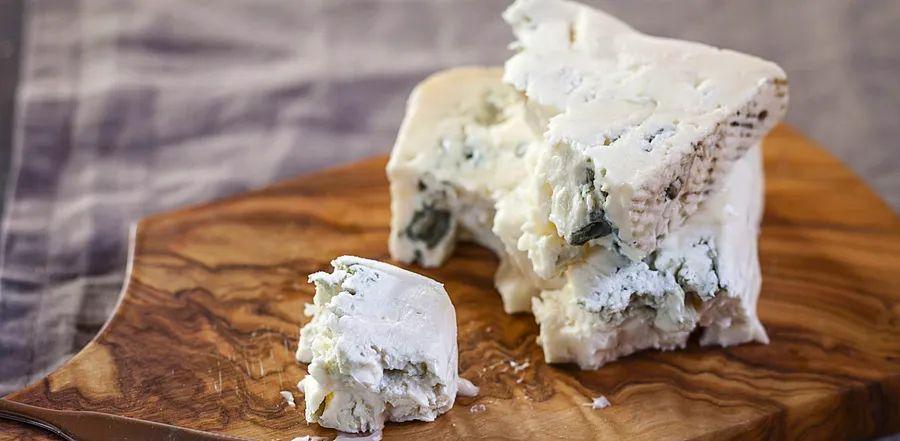What is Gorgonzola Cheese?

Blue cheese tends to make a bold statement, often sparking strong reactions – you either love it or dislike it. But Gorgonzola, Italy's own version, bridges the gap. It’s a perfect blend of salty, creamy, tangy, and slightly sweet flavors – assertive yet balanced enough to complement a variety of dishes.
What exactly is Gorgonzola Cheese?
Gorgonzola is one of Italy’s oldest cheeses, with a rich history spanning centuries. Typically made from cow's milk, though some regions incorporate sheep or goat milk for a sharper taste, it’s characterized by the blue veining created by the mold Penicillium roqueforti. The cheese is aged in highly humid conditions to encourage rapid mold growth and create its signature flavor.
Gorgonzola hails from Northern Italy, specifically the Lombardy region. Known for its proximity to France and Switzerland, Lombardy shares many culinary traditions with these neighboring countries, influencing the rich flavors found in this unique cheese.
Are Gorgonzola and Blue Cheese the Same?
Blue cheese refers to a variety of cheeses that feature blue or green mold veins. Gorgonzola is a specific type of blue cheese, similar to Stilton and Roquefort. If a recipe calls for blue cheese, Gorgonzola is a great option thanks to its smooth texture and milder flavor.
What does Gorgonzola taste like?
Gorgonzola comes in different varieties, with its flavor intensity and sharpness influenced by its aging process. Younger Gorgonzola is creamy and soft with a subtle tang, while aged versions are firmer and have a bolder, more pronounced flavor.
If you're a fan of blue cheese, you'll likely enjoy Gorgonzola. But even if you're typically put off by the strong taste of blue cheese, Gorgonzola’s softer, milder profile might win you over. Its flavor is often compared to feta rather than other more pungent blue cheeses.
Different Varieties of Gorgonzola
Gorgonzola comes in two main varieties: dolce and piccante. Dolce is the sweeter, younger version, with a smooth and creamy texture. It's typically aged for a few months, retaining a fresh flavor that highlights the natural taste of the milk. Piccante, on the other hand, is the bolder, more mature variety. Aged for longer, it develops a sharper, funkier taste, a firmer texture, and a more pronounced blue-green veining with a hint of spiciness.
How to Use Gorgonzola

Discover the recipe: Homemade Pear and Gorgonzola Ravioli
Gorgonzola is famous for its bold, salty, and funky taste, which pairs wonderfully with rich, sweet, and earthy flavors. The mild sweetness of Gorgonzola dolce makes it a perfect match for honey and fruits. Classic pairings like pears or figs with Gorgonzola can elevate any salad, especially when combined with earthy nuts like walnuts. Beets and mushrooms also complement the cheese, enhancing its deep umami and woodsy notes.
Gorgonzola is an excellent addition to a salad featuring bitter greens like frisee, endive, and radicchio. This rich cheese also shines when used in creamy sauces or as a topping on cheesy pizza. For a traditional touch, swirl it into hot polenta for a creamy, salty treat popular in Lombardy. Italians also love melting Gorgonzola into risotto just before serving to infuse the dish with a rich, salty depth.

Find the recipe: Amazing Gorgonzola and White Wine Cheese Ball
One of the reasons Gorgonzola is so loved is its layered, complex flavor that allows it to shine on its own. This makes it a popular choice for cheese boards or simply eating by itself – it’s sharp and funky, but not overwhelming. The dolce version is especially favored in Italy as a dessert cheese because of its natural sweetness.
Alternatives to Gorgonzola
Depending on your recipe or the occasion, you can easily swap in other blue cheeses. Since Gorgonzola is milder than many others, using a stronger variety will result in a more intense flavor. If you're just sprinkling it on top or adding it to a dish at the end, you can use a bit less of a more potent cheese for a similar effect.
Stilton, a famous English blue cheese, has a texture similar to Gorgonzola but is known for a more pungent, 'stinky' flavor. Roquefort, France’s iconic blue cheese, has a bold barnyard taste and is a bit less tangy than Gorgonzola, but still brings a strong and distinctive flavor.
How to Properly Store Gorgonzola
Storing Gorgonzola is simple – just wrap it in parchment or wax paper. If you don't have either, plastic wrap will do in a pinch, though it's not the best choice. Wrap the cheese loosely, ensuring the paper isn't tightly sealed, but also ensuring no part of the cheese is exposed to the air. Store it in the refrigerator, ideally in the cheese drawer, where it will stay fresh for up to a month.

1

2

3

4

5
Evaluation :
5/5